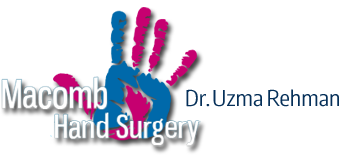Joint Hypermobility: Are You “Double Jointed”?
Joint hypermobility is a fairly common condition in which a person can extend some or all of their joints farther than most people. Think of that boy in your grade school who would bend his thumb all the way backwards. Or maybe you were the one in the cheerleading photos, whose arms bent beyond the normal straight position of the other girls when raised.
In common terminology people call this being “double jointed”. Although, obviously, no one literally has double joints! Joint hypermobility itself isn’t usually a medical problem. And many people don’t even realize they are hypermobile unless it causes pain. In some activities being hypermobile can even give a person a slight advantage – such as in dance, gymnastics, or even playing a musical instrument.
When Being Double Jointed is a Problem
In most cases, having hypermobile joints is a harmless hereditary condition, resulting from weaker collagen fibers in the ligaments, or from shallower joint sockets. And females are more likely than males to have hypermobile joints.
Hypermobility can also be developed by gymnasts, yoga practitioners and other athletes, through the training and muscle stretching they do that makes the joints more supple. People with Downs’ syndrome are also more prone to joint hypermobility.
However, some people with hypermobile joints may have symptoms such as joint or muscle pain or have joints that are more prone to injury or dislocation than other people. If this is the case, they may have either Benign Joint Hypermobility Syndrome (BJHS) or the more serious Type 3 Ehlers–Danlos Syndrome (EDS).
Symptoms of Joint Hypermobility Syndrome
If you are can extend certain (or many) joints beyond the normal range – but you don’t have any pain – you are probably just genetically “double jointed. However, symptoms of Joint Hypermobility Syndrome typically include:
- Muscle strain or pain after hard physical exertion or exercise
- Joint stiffness or tenseness caused by fluid collecting in the joint.
- Easily twisting, straining or spraining of joints
- Injured or dislocated joints
Diagnosing Joint Hypermobility
An experienced hand and arm doctor like Uzma Rehman, DO will be able to examine you to make a diagnosis of Generalized Joint Hypermobility (the harmless kind) or Joint Hypermobility Syndrome.
The “Beighton Score” is a measurement of the person’s flexibility using a standard set of movements at the thumb/wrist, fifth finger, elbows, lower back, and knees. A high Beighton Score means you’re hypermobile or “double jointed”.
However, a high score alone does not mean one has a type of Joint Hypermobility Syndrome. But If the patient has four or more hypermobile joints AND has had pain in those joints for three months or more then it’s likely that they have Joint Hypermobility Syndrome. These criteria also take account of other concerns such as dislocations, injuries to the tissues around the joints, and lax skin.
Treating Joint Hypermobility
There isn’t a “cure” for joint hypermobility, because it is just how the body is built. However, when it is causing pain, injury or other symptoms, it can be helped and controlled a number of ways.
In most cases, physical therapy can ease your symptoms with gentle exercises that stretch, strengthen and condition the muscles around the hypermobile joints.
Over the counter non-steroidal anti-inflammatory drugs (NSAIDs) like ibuprofen may be helpful if the joint often swells up. Hand specialist Doctor Uzma Rehman can prescribe painkillers (analgesics) for painful joint hypermobility. Paracetamol is usually the first choice but stronger painkillers such as co-codamol or co-dydramol can be used if necessary.
Dr. Rehman can also show you how to apply the proper splints, taping or elastic bandages to support the joints and protect against dislocation.
In general, joint surgery is NOT necessary or recommended for joint hypermobility syndrome, except in the direst cases. However, if the patient tears a tendon (which is more common in people with hypermobile joints) then surgical repair is usually necessary.
Top Detroit Area Joint Doctor
If you are suffering from any pain or loss of function in any of your joints, contact board certified Detroit area hand surgeon Doctor Rehman for a comprehensive evaluation and consultation. As with most medical conditions, early detection, awareness, and a prevention or treatment plan is the most effective way to relieve the pain, and ensure that serious joint damage does not progress.
Doctor Rehman will assess your individual situation, and prescribe the treatments that are best for your condition.

